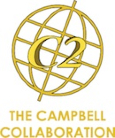Best practice portal main page
Multidimensional family therapy (MDFT) on retention in treatment and to reduce use
Summary of the evidence
MDFT was compared to IP in one study (INCANT study- N= 450, Rigter et al., 2012, cited in EMCDDA 2014) and was found to be more effective in:
- reducing the frequency of cannabis consumption in the high-severity MDFT group more than the corresponding IP group across assessments points (differential slope coefficient on treatment=3.8 [95% CI=1.4 to 7.6], p=0.002)
- reducing the prevalence of cannabis use disorders at 12-month follow-up. Namely, 38% of MDFT adolescents met the criteria for cannabis dependence and 33% for cannabis abuse, with 18% no longer having a cannabis disorder. In IP, the corresponding numbers were 52%, 22%, and 15% (differential slope coefficient on treatment=0.9 [95 % CI=0.2 to 1.7], p=0.015).
- decreasing the number of dependence symptoms from baseline to 12-month follow-up. The 12-month symptoms average was 2.4 for MDFT (SD=2.0) and 3.0 for IP (SD=2.0). The drop in symptoms was larger in MDFT than in IP (differential slope coefficient on treatment=0.27 [95 % CI=0.13 to 0.41], p<0.001).
- retaining patients in treatment. A higher proportion (90%) of MDFT patients completed therapy in comparison to IP (48%) (OR=9.8 [95 % CI=5.7 to 16.7], p<0.001).
Another systematic review (Esteban et al. 2022, 18 studies, RCTs= 15), evaluated the effectiveness of different types of family therapy on substance use treatment among adolescents and adults and found that:
- Multidimensional Family Therapy is as effective as Cognitive Behavioral Therapy in reducing consumption, with medium to large effect sizes observed for both treatments at the end of the intervention (7 studies focused on MDFT vs CBT).
- Family therapy is effective in both reducing consumption and improving family functioning.
- Family therapy might be suitable for adolescents with cases of higher severity of substance abuse, as it integrates family members in the treatment process.












